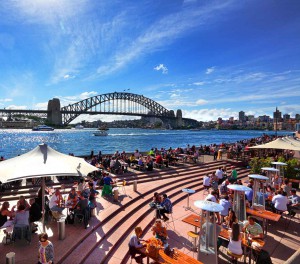The other day we have covered Australia’s population growth, and today we look at population projections.
But first, let’s do a quick count.
There are 24.127 million people living in Australia.
A quick breakdown is as follows:
|
New South Wales |
7.725 million people or 32% total |
|
Victoria |
6.068 million people or 25% total |
|
Queensland |
4.844 million people or 20% total |
|
Western Australia |
2.617 million people or 11% total |
There are three forecast series that the bureau uses when it comes to population forecasts – an A series, a B series and a C series.
Now, some technical stuff….well, not too technical really.
They are absolute wizards when it comes to naming things at the ABS.
- Now, series A is the high series – meaning lots of growth.
- The B series is, well, the middle of the road – not too hot but not too cold.
- And the C series is low balling – i.e. not much happening.
Okay, got that?
Now, the last time the ABS projected population growth was back in 2012.
When compared to the actual 2016 results, we find that:
- Australia is growing much slower than the series C projection.
- So, too, are all other states and territories except New South Wales and Victoria.
- Victoria has grown on par with the A series projection, whilst New South Wales has grown much faster than even the highest projections.
Now, let’s move forward.
Here, I have broken the statistics up into two groups – by capital city and the rest of the state.
I have also included information on the number of new dwellings needed, as well as the range of population projections.
I have offered my two-bob’s worth. Most would expect that.
In all cases, we are comparing 2026 with 2016 – so, the next ten years.
And I have opted, too, to keep it short; so again, I have only covered the four big states.
So, here goes:
Sydney – Annual population growth between 80,000 and 82,000, with an average 33,000 new homes needed each year. This is much less than recent results. I expect higher growth figures than forecast.
Balance NSW – Population growth between 10,000 and 26,000 each year, with about 10,000 new homes needed per annum. Upper range most likely.
Melbourne – Annual growth between 81,000 and 105,000, with some 37,000 new homes needed each year. Again, below recent results; upper range most likely.
Balance of Victoria – Population growth between 4,000 and 20,000 per annum, with 7,000 new homes expected to be built each year. Lower end of the range most likely.
Brisbane – Annual population growth between 42,000 and 61,000, with around 20,000 new homes needed each year. Lower end of the range, based on current trends.
Balance of Qld – Annual population growth between 38,000 and 60,000, with again, some 20,000 new homes needed each year. Same comment as Brisbane. Qld likely to see limited population growth unless its economy (i.e. jobs) improves.
Perth – Annual population growth projected between 56,000 and 86,000, with 27,000 new homes needed each year. Way above current trend.
Balance of WA – Population growth between 9,000 and 12,000 per annum, with just 4,000 new dwellings needed per year. Ditto and same scenario as Qld.
When looking at Australia as a whole, the projected population varies between 27.739 million to 29.327 million by 2026.
That’s an annual increase of between 348,000 and 487,000.
I think that something like 400,000 per annum is most likely over the next decade.
We will need to build some 175,000 new dwellings per annum, over the next decade, to cater for 400,000 new residents each year.
As in the past, most of this demand – unless we intervene – will remain very concentrated.
Some 55% of the future housing demand is projected for Sydney, Melbourne, Brisbane and Perth.
This lifts to 70% if you include South East Queensland and Newcastle/Wollongong in the mix.
And just over 90% of the new homes will be needed in the big four states alone.
Why?
Well, it’s all about jobs.
End note 
Now bums on seats are very important when it comes to property investment.
Having a bigger bum is better than having a skinny one.
But for mine, it is increasingly looking like a Ponzi scheme.
When it comes to liveability, the smaller joints are starting to look very attractive.
But there’s one big catch.
Again, it comes down to work.
Keen to hear your thoughts.
from Property UpdateProperty Update http://propertyupdate.com.au/whats-ahead-for-australias-population/



No comments:
Post a Comment